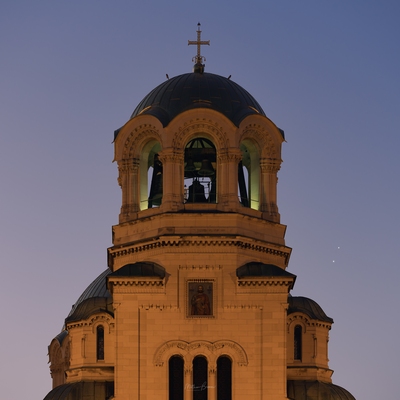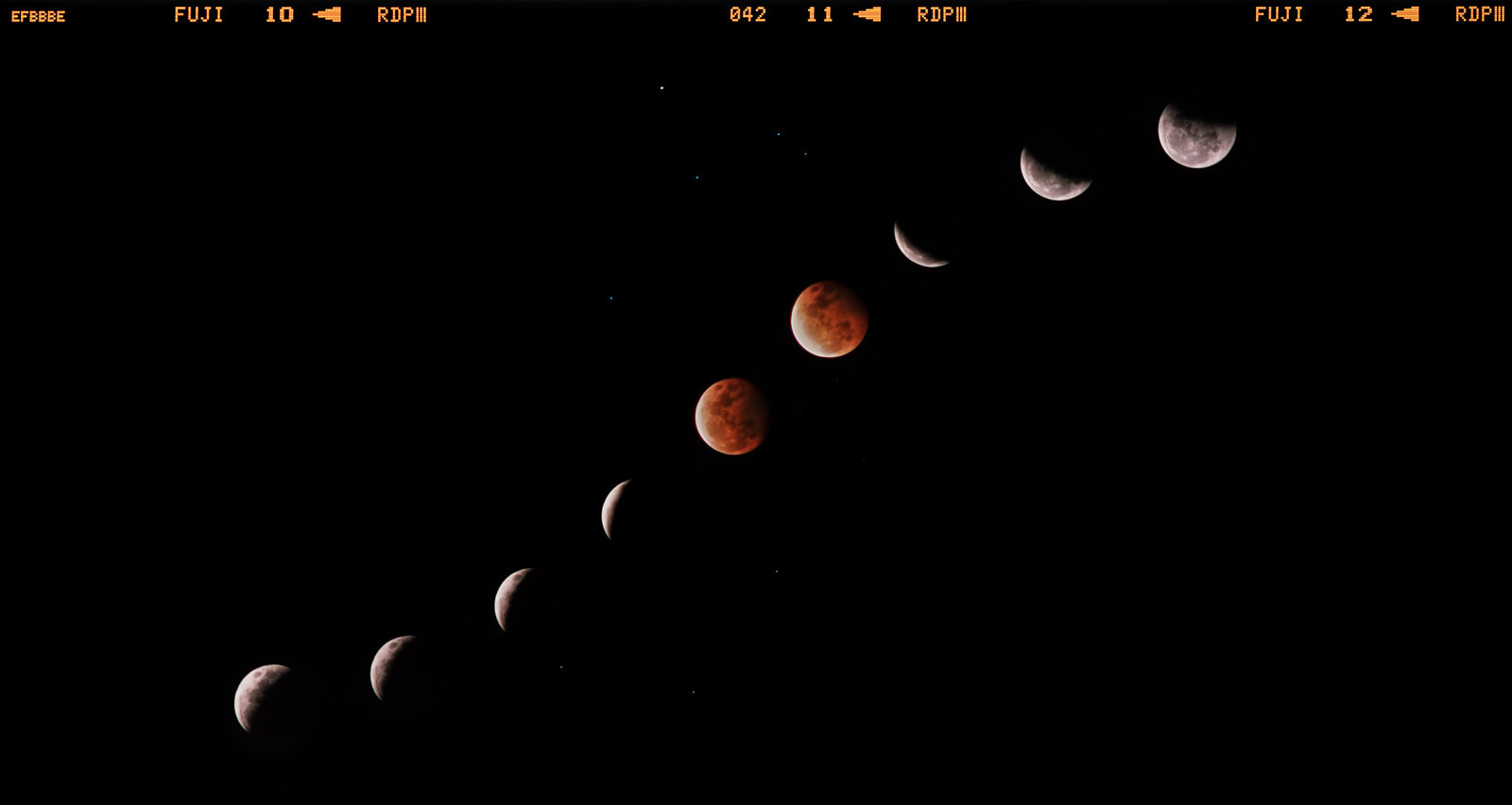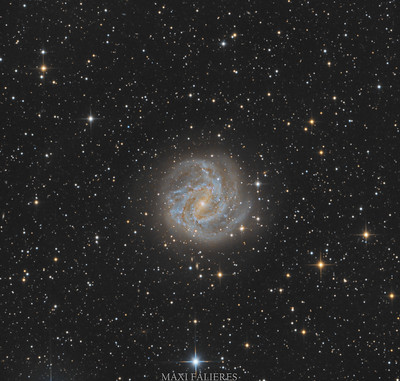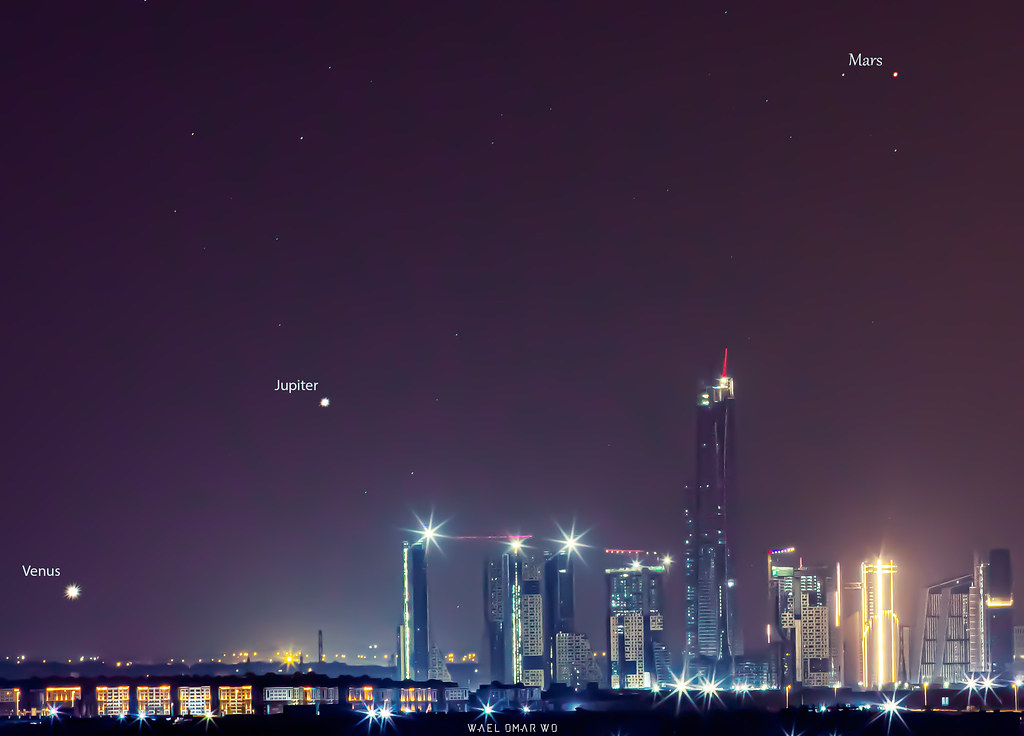Page 1 of 4
Submissions: 2022 May
Posted: Mon May 02, 2022 2:23 am
by bystander
__________________________________________________________________________________________________
Please post your images here.
Please see
this thread before posting images; posting images demonstrates your agreement with
the possible uses for your image.
If hotlinking to an image, please ensure it is under 500K.
Hotlinks to images over 500K slow down the thread too much and will be disabled.
Thank you!
_________________________________________________________________________________________________
<- Previous submissions
Re: Submissions: 2022 May
Posted: Mon May 02, 2022 8:15 am
by george_tzel
Hi all,
I captured the core of the Milky way under a dark site in Greece (Bortle 1) during an astronomy club event.
Gear used:
- Canon 750d
- Canon 50mm f/1.8 prime lens
- Minitrack LX2
Exposures: 10x90'' ISO 1600 f/4
Location: Mount Parnon,Greece
Link for full size image:
https://www.flickr.com/photos/george_tz ... ateposted/
Copyright: George Tzellos
Re: Submissions: 2022 May
Posted: Mon May 02, 2022 11:09 am
by Lucadinoi
M106
M 106 (also known as NGC 4258) is a spiral galaxy visible in the constellation of Hunting Dogs; it appears to contain a supermassive black hole inside.
M106 is an example of a Seyfert galaxy; the detection of unusual radio wave and X-ray emissions observed through the Very Large Baseline Array radio telescope indicates that probably part of the galaxy is precipitating into a supermassive black hole located in its center: in fact it seems that a mass equal to 36 million is contained in the core of solar masses, concentrated in a volume between 1/24 and 1/12 of a light year, or between 12,000 to 54,000 AU.
The shape of M106 resembles that of the Andromeda Galaxy (M31), but with a different inclination, so that all the structures of the dust clouds on the galactic plane are perfectly visible; the spiral arms are rich in H II regions which in the images are shown in blue and red color, depending on whether or not they are associated with clusters of particularly hot and bright stars. In 1981 a supernova appeared between its arms, classified as SN 1981K, which reached the sixteenth apparent magnitude; since the spectrum was not analyzed, it was never known what kind of supernova it was. The distance of the galaxy is estimated at 21-25 million light years and its total mass is approximately 190 billion solar masses; it moves away from us at the speed of 537 km / s.
12 "Truss RC telescope reduced to 1790
Moravian off-axis guider and Moravian G0300 guide camera
Celestron 80/600 guide tube with Asi Zwo 224
Moravian G2 8300 camera with internal wheel
Ioptron Cem120 mount
Moonlite focuser and 3.5 "electronic rotator
Electronic temperature control and anti-condensation bands
Cls ccd, R, G, B, Ha 6nm filters, all Astronomik
Shooting data:
51x240s Cls Ccd
15x600s HA
19x240s R
19x240s G
19x240s B
Processing: Pixinsight, Photoshop, star spikes, astronomy tools
Re: Submissions: 2022 May
Posted: Mon May 02, 2022 1:34 pm
by ExplorerEGYWO
 Dolphin Head Nebula
Dolphin Head Nebula by
Wael Omar, on Flickr
Hello,
My image for "Dolphin Head " Nebula.
This is the hardest target i 've ever imaged since i start this hobby . Its a very faint nebula just above the horizon by 36 degrees and few hours to capture every night plus its very small in size relative to my gears FOV. ( I use Redcat 51).
I traveled around 1000 km through EGYPT to capture this Nebula in Bortle 9 , 4 ,2 regions to catch enough Data for it.
Dolphin Head nebula is HII region in Canis major constellation. The nebula is the Blue Bubble around the yellow star of a type " Wolf Rayet " and called EZ Canis major , This wolf rayet star have completely lost their outer hydrogen and are fusing helium or heavier elements in the core. Their spectra showing prominent broad emission lines of ionised helium and highly ionised nitrogen or carbon and so have very high surface temp around 89000 Kelvin.This star is in the brief, pre-supernova phase of its stellar evolution.
The Nebula is about 4900 Light years from earth ,its HII region blown by stellar winds up to 1,700 km/s and ionized by the intense UV radiation.
I pushed my gears so hard to get most of the nebula and reach 1200 seconds of exposure / frame. I stack most of the frames but remove some taken in bortle 9 because the LP gradients were so heavy that wash out details of the cleaner frames in Bortle 2 after stacking.
Technical Data :
ANTILA 3.0 nm Ha: 5x1200" (1h 40') (gain: 121.00) -20°C bin 2x2
ANTILA 3.0 nm Ha: 16x300" (1h 20') (gain: 121.00) -20°C bin 2x2
ANTILA 3.0 nm Ha: 22x600" (3h 40') (gain: 121.00) -20°C bin 2x2
OPTOLONG Oiii 6.5nm: 32x300" (2h 40') (gain: 121.00) -20°C bin 2x2
OPTOLONG Oiii 6.5nm: 12x600" (2h) (gain: 121.00) -20°C bin 2x2
Integration: 11h 20'
Place : EGYPT, Cairo & Fayoum.
For more technical Data please see below link :
https://www.astrobin.com/o4nalh/
Re: Submissions: 2022 May
Posted: Mon May 02, 2022 4:24 pm
by Aleix_Roig
Good afternoon,
I would like to share my latest work, this time on the Orion constellation with LDN 1622 and the Barnard's Loop. Thanks for your time.
Full HD:
https://www.astrobin.com/full/mhl0qd/0/
The Lynd's Dark Nebula 1622, also known as Boogeyman Nebula, can be found in the Orion constellation very close to other well known nebulae such as the M78 nebula or the popular Great Orion Nebula (M42). The LDN 1622 shows an intricate silhouette mostly composed of dark nebulae. Complex structures of dust that can be detected through the use of long exposures with broad band filters.
Surrounding this dark nebulae we see the prominent structure of the Barnard's Loop Nebulae. This emission nebula is composed of huge HII regions that can be easily detected by the use of narrow band Ha filters.
Details:
FSQ106:
L: 186 x 300" (15h30')
RGB: (18,18,18 ) x 300" (4h30')
FSQ85:
Ha: 243 x 300" (20h15')
Calibrated with darks, flats and dark-flats.
Total exposure: 40h 15'
Moon at 15% (on average)
Image resolution: 1.46”/pixelFOV (full image): 2º31' x 1º40' (more than 8 full moons)
Equipment:
FSQ106 EDX4 + ASI2600MM + LRGB Astrodon filters + Ha3nm Antlia - with ZWO EFW 7 posFSQ85 + ASI294MM + SHO LRGB Baader filters - with ZWO EFW 8 posMesu200 mountGuiding with ASI120MM and ZWO Mini Guide Scope
Software: SGP, PHD2, APP, PIX, LR, TPZ, PS.
Aleix Roig, April 2022
Prades (Tarragona, Catalonia - Spain).
Re: Submissions: 2022 May
Posted: Mon May 02, 2022 5:14 pm
by wrightdobbs
"A Planetary Alignment and the Milky Way"
Captured at St Marks Wildlife Refuge, Florida
"Captured this planetary alignment with the Moon and the Milky Way core in this panorama on the morning of April 27th. Captured this one on the St Marks Wildlife Refuge in Florida and pictured in this image (from left to right) is Jupiter, the Moon, Venus, Mars, and Saturn. An amazing astronomical sight!"
Imaging camera was Sony a7ii, Sigma 14mm f/1.8 lens.
Each image in this 4 panel panorama was captured at ISO-5000, f/3.2, and 30s exposures
https://twitter.com/WrightDobbs
https://www.facebook.com/wrightdobbsphotography
https://instagram.com/wrightdobbs
Re: Submissions: 2022 May
Posted: Mon May 02, 2022 9:11 pm
by mathewbrowne
I was lucky enough to have clear dawn skies to photograph the conjunction of Venus and Jupiter above the Alexander Nevsky Cathedral in Sofia
 Sofia - Alexander Nevsky Cathedral
Sofia - Alexander Nevsky Cathedral,
Bulgaria © Mathew Browne via
PhotoHound
Re: Submissions: 2022 May
Posted: Tue May 03, 2022 7:50 am
by astrosama
Supernova 2022hrs in NGC 4647
Time of Observation: ( 01/05/2022, 21:45 UT)
Supernova 2022hrs was discovered by amateur astronomer Koichi Itagaki on April 16.619 (14:50h UT) in NGC 4647, it is a spiral galaxy in the constellation of Virgo
The supernova at discovery date was at around magnitude +15 and brightened by over two magnitudes, with estimates at the time of taking this photo ( 01/05/2022, 21:45 UT) around magnitude +12.4.
NGC 4647 is an attractive spiral galaxy that shines at magnitude +11.3 and spans at very small area 3’ x 2.5’ at the precise position RA 12h 43m 34.3s, Dec +11° 34’ 36”., it needs a powerful telescope to taking a good zoom frame .NGC 4647 is a close companion on the sky (~3’ separation) to the brighter and larger galaxy Messier 60 (NGC 4649).
NGC 4647 and M60 are catalogued as Arp 116 in Halton Arp’s Atlas of Peculiar Galaxies. NGC 4647 is listed as lying 63 million light years away, with M60 placed 6 million light years closer.
 SN2022SHR--HDR
SN2022SHR--HDR by
osama Fathi, on Flickr
For comparison, this Supernova didn't exist in the famous Hubble / APOD photo of the NGC4647:
https://apod.nasa.gov/apod/ap120914.html
Details :
Data acquired by Telescope Live, all data are customized for me by Advanced Request and I completed all post- processing works .
Telescope Specification,Model:
Officina Stellare 700 RC,Aperture: 700 mm, Focal Length: 5600 mm,F-ratio: 8.0, Mount: Officina Stellare equatorial fork mount .
Camera Specification
CCD Model: FLI PL16803
Subs:
Astrodon LRGB 2GEN filters
Luminance: 1 x 600s (bin 1)
Red :1 x 600s (bin 1)
Green: 1 x 600s (bin 1)
Blue: 1 x 600s (bin 1)
Exposure time: 40min
Darks : 600s
Flats: L :5s , R:30s , G: 10s , B: 5s
Post-Processing :
- DeepSky Stacker (DSS) : For Stars alignment
- PixInsignt: for LRGB combination, Calibration, Denoise, Linear transformation and Curve transformation
- Adobe Photoshope: Color enhancement and final touch
- Astrotools and Starspikes Pro
Credits:
Osama Fatehi / Telescope Live
https://www.instagram.com/osama.fathi.nswatcher85/
https://www.instagram.com/telescope.live/
Egypt/Spain
Re: Submissions: 2022 May
Posted: Tue May 03, 2022 10:17 am
by masahiro miyasaka
Re: Submissions: 2022 May
Posted: Wed May 04, 2022 12:22 am
by jase.film
"May 26th 2021 Super Blood Moon"
This is an in camera lunar eclipse sequence shot on a single slide of film - using a multiple exposure technique.
Photographed from the South Coast of NSW, Australia over a 2 hour duration.
Exposures from left to right:
[1/125 @ f/5.6], [1/125 @ f/5.6], [1/60 @ f/5.6], [1/60 @ f/5.6], [4" @ f/4], [4" @ f/4], [1/60 @ f/5.6], [1/125 @ f/5.6], [1/250 @ f/5.6].
Film: Provia 100f
Camera: Pentax 67ii
Lens: Takumar 600mm f/4
Mount: Neq6 equatorial mount
I wrote an article about the process I took to achieve this in camera
here.
 May 26th 2021 Super Blood Moon
May 26th 2021 Super Blood Moon
Copyright: Jason De Freitas
www.jasondefreitas.com
Insta: @jase.film
Re: Submissions: 2022 May
Posted: Wed May 04, 2022 5:05 am
by Ann
astrosama wrote: ↑Tue May 03, 2022 7:50 am
Supernova 2022hrs in NGC 4647
Time of Observation: ( 01/05/2022, 21:45 UT)
Supernova 2022hrs was discovered by amateur astronomer Koichi Itagaki on April 16.619 (14:50h UT) in NGC 4647, it is a spiral galaxy in the constellation of Virgo
The supernova at discovery date was at around magnitude +15 and brightened by over two magnitudes, with estimates at the time of taking this photo ( 01/05/2022, 21:45 UT) around magnitude +12.4.
NGC 4647 is an attractive spiral galaxy that shines at magnitude +11.3 and spans at very small area 3’ x 2.5’ at the precise position RA 12h 43m 34.3s, Dec +11° 34’ 36”., it needs a powerful telescope to taking a good zoom frame .NGC 4647 is a close companion on the sky (~3’ separation) to the brighter and larger galaxy Messier 60 (NGC 4649).
NGC 4647 and M60 are catalogued as Arp 116 in Halton Arp’s Atlas of Peculiar Galaxies. NGC 4647 is listed as lying 63 million light years away, with M60 placed 6 million light years closer.
 SN2022SHR--HDR
SN2022SHR--HDR by
osama Fathi, on Flickr
For comparison, this Supernova didn't exist in the famous Hubble / APOD photo of the NGC4647:
https://apod.nasa.gov/apod/ap120914.html
Details :
Data acquired by Telescope Live, all data are customized for me by Advanced Request and I completed all post- processing works .
Telescope Specification,Model:
Officina Stellare 700 RC,Aperture: 700 mm, Focal Length: 5600 mm,F-ratio: 8.0, Mount: Officina Stellare equatorial fork mount .
Camera Specification
CCD Model: FLI PL16803
Subs:
Astrodon LRGB 2GEN filters
Luminance: 1 x 600s (bin 1)
Red :1 x 600s (bin 1)
Green: 1 x 600s (bin 1)
Blue: 1 x 600s (bin 1)
Exposure time: 40min
Darks : 600s
Flats: L :5s , R:30s , G: 10s , B: 5s
Post-Processing :
- DeepSky Stacker (DSS) : For Stars alignment
- PixInsignt: for LRGB combination, Calibration, Denoise, Linear transformation and Curve transformation
- Adobe Photoshope: Color enhancement and final touch
- Astrotools and Starspikes Pro
Credits:
Osama Fatehi / Telescope Live
https://www.instagram.com/osama.fathi.nswatcher85/
https://www.instagram.com/telescope.live/
Egypt/Spain
Very very interesting, Osama!
Note that the supernova appears to be very bright compared with the parent galaxy. It is also bluish in color, so we may guess that it is a supernova type Ia. That is indeed the case, too.
Again, very interesting! Thank you!
Ann
Re: Submissions: 2022 May
Posted: Thu May 05, 2022 6:20 am
by Lucadinoi
Ngc3628 Hamburger
NGC 3628, also known as the Hamburger Galaxy or Sarah's Galaxy, is an unbarred spiral galaxy about 35 million light-years away in the constellation Leo. It was discovered by William Herschel in 1784. It has an approximately 300,000 light-years long tidal tail. Along with M65 and M66, NGC 3628 forms the Leo Triplet, a small group of galaxies. Its most conspicuous feature is the broad and obscuring band of dust located along the outer edge of its spiral arms, effectively transecting the galaxy to the view from Earth.
Due to the presence of an x-shaped bulge, visible in multiple wavelengths, it has been argued that NGC 3628 is instead a barred spiral galaxy with the bar seen end-on. Simulations have shown that bars often form in disk galaxies during interactions and mergers, and NGC 3628 is known to be interacting with its two large neighbors.
12 "Truss RC telescope reduced to 1790
Moravian off-axis guider and Moravian G0300 guide camera
Celestron 80/600 guide tube with Asi Zwo 224
Moravian G2 8300 camera with internal wheel
Ioptron Cem120 mount
Moonlite focuser and 3.5 "electronic rotator
Electronic temperature control and anti-condensation bands
Cls ccd, R, G, B, Ha 6nm filters, all Astronomik
Shooting data:
101x240s Cls CCD
15x600s Ha
31x240s R
31x240s G
31x240s B
Processing: Pixinsight, Photoshop, star spikes, astronomy tools
Image full resolution:
https://flic.kr/p/2niBbkt
Re: Submissions: 2022 May
Posted: Thu May 05, 2022 10:30 pm
by marctoso
Stone, Sand, Stars, Spirals
www.ancientskys.com
Copyright: Marc Toso
Ancient petroglyph created by Ancestral Puebloans in Southeastern Utah.
Re: Submissions: 2022 May
Posted: Fri May 06, 2022 2:06 am
by sydney
Hickson 44 Galaxy Group
Nick Pavelchak
https://www.astrobin.com/eo4zm2/0/
Re: Submissions: 2022 May
Posted: Fri May 06, 2022 7:42 am
by Thierry Legault
The Moon in Paris: two days before moonrise under the Triumphal arch, monset behind the Eiffel tower, taken 12 km away from the tower.
On the time-lapse, one can see the distortion and change of colors of the Moon at horizon just before sunrise:
http://www.youtube.com/watch?v=0jyJ5W3AoSs
Re: Submissions: 2022 May
Posted: Fri May 06, 2022 7:40 pm
by Rafeee
Horizons and roads
Copyright: Rafael Schmall
Only the center of our galaxy in the southeast starts to appear from Hungary at spring dawn. As the days go by, the period of total darkness becomes shorter and shorter, so there is less and less time to detect the Milky Way at first until the summer solstice.
My big favorite is the sight of spring rapeseed fields, but photographing the starry sky with a rapeseed foreground isn’t that easy because of the silly weather.
I took panoramas and all sorts of pictures this dawn, but still, this Milky Way, which swam from the left, caught the road the best. Simple picture but very cozy for me.
Gear:
Canon EOS6dmod
Samyang 24 f/1.4
Skywatcher Star Adventurer
Exif:
2 x 75 sec, ISO3200, f4, 24mm ( 1 still exposure and one tracked ).
Re: Submissions: 2022 May
Posted: Fri May 06, 2022 8:52 pm
by Sergio
Southern Cross
One of the most iconic constellation of the southern hemisphere. It lies on the southern end of the Milky Way. The name Crux is Latin for cross. Even though it is the smallest of all 88 modern constellations, Crux is among the most easily distinguished as its four main stars each have an apparent visual magnitude brighter than +2.8. It has attained a high level of cultural significance in many Southern Hemisphere states and nations.
Taken from Buenos Aires Subrurbs
Canon 1.8 Lens, QSI 583 WS, NEQ6 LRGB (40,40,40.,40)
more info at
www.baskies.com.ar
With best Regards
Sergio
Re: Submissions: 2022 May
Posted: Sat May 07, 2022 8:59 pm
by astrohokie
Wizard Nebula

Wizard Stars (rotated) by
mark h, on Flickr
From Wikipedia:
"NGC 7380 is a young open cluster of stars in the northern circumpolar constellation of Cepheus, discovered by Caroline Herschel in 1787. The NGC 7380 complex is located at a distance of approximately 8.5 kilolight-years from the Sun, in the Perseus Arm of the Milky Way. The cluster spans ~20 light-years with an elongated shape and an extended tail. Age estimates range from 4 to 11.9 million years. At the center of the cluster lies DH Cephei, a close, double-lined spectroscopic binary system consisting of two massive O-type stars. This pair are the primary ionizing source for the surrounding H II region, and are driving out the surrounding gas and dust while triggering star formation in the neighboring region."
Processed in Pixinsight, SHO palette channel combination, curves transformation adjustments, color masks, Green SCNR, deconvolution. Stars removed via Star Xterminator then added back in via pixel math.
Equipment:
Celestron EdgeHD 8
Celestron OAG
Celestron Autofocuser
ASI 174MM Guide Camera
ASI 1600MM Pro Imaging Camera
Gain 139 Offset 40 Temp -20C
ASI 7 position EFW
36 mm Astronomik 6nm Ha, O3, S2 filters
Total Intergration Time = 20 hours
Ha Intergration Time = 105 * 300sec
O3 Intergration Time = 106 * 210sec
S2 Integration Time = 56 * 360sec
Virginia, USA
Bortle 7
Copyright: Mark Hoffman
Re: Submissions: 2022 May
Posted: Sun May 08, 2022 8:16 am
by Bobinius
M101, The Pinwheel Galaxy in HaLRGB
Copyright: Bogdan Borz
Telescope: Teleskop Service ONTC Newtonian 250mm @ 3.8
Mount: Skywatcher AZEQ6 Pro
Camera: ZWO ASI 2600MM filtres Astrodon Ha 3nm; Baader RVB
Software: Sequence Generator Pro, Pixinsight, Photoshop
Dates : 16 January 25 April 26 April 29 April 2022
L 81 x 180s
R 31 x 180s
G 32 x 180s
B 31 x 180s
Ha 42 x 300s
RGB - Bortle 3; Ha - Bortle 8
Total exposure: 12h15
Location: Lot, France
Processing: Pixinsight, Photoshop.
Full resolution:
https://www.astrobin.com/full/081oh8/0/?mod=&real=
Re: Submissions: 2022 May
Posted: Sun May 08, 2022 10:54 am
by atomo
Hi guys,here IC4592 in Scorpio.
Hi guys,here SH2-1 in Scorpio.
Telescope: SharpStar 150 f2,8
Guide Scope:Evoguide
Mount : Skywatcher HEQ5
Imaging camera: ZWO 2600MC
Guiding camera: ZWO 290 MC
Filters: Lpro
Plate solving: SGpro
Imaging software: Sgpro
Guiding software: PHD2
Processing software: Pixinsight
Lpro: 240x120s exposure @ 100 Gain
Integration: 8hrs
Copyright @ Davide Mancini
Re: Submissions: 2022 May
Posted: Sun May 08, 2022 10:56 am
by atomo
Hi guys,here SH2-1 in Scorpio.
Telescope: SharpStar 150 f2,8
Guide Scope:Evoguide
Mount : Skywatcher HEQ5
Imaging camera: ZWO 2600MC
Guiding camera: ZWO 290 MC
Filters: NBZ Idas/Lpro
Plate solving: SGpro
Imaging software: Sgpro
Guiding software: PHD2
Processing software: Pixinsight
NBZ: 210x120s exposure @100Gain
Lpro: 150x120s exposure @ 100 Gain
Integration: 12hrs
Copyright @ Davide Mancini
Re: Submissions: 2022 May
Posted: Sun May 08, 2022 9:55 pm
by Sergio
Messier 68
Situated opposite to the Galactic Center which is an unusual place for a globular, Messier 68 is orbiting the galactic bulge with an eccentricity of 0,5. Lying at a distance of about 33,000 light years from earth, the cluster spreads over 106 light years in diameter.
Messier 68 is quite difficult to observe for Northern Hemisphere because of its southern declination. Though it can be found by following a line from the stars Delta to Beta Corvi (mag 3), which points toward 5.4-mag ADS 8612 (SAO 180965). M68 is then easily located about 45 minutes NE of this star.
Taken from Entre Rios, Argentina using an 8" Orion Optics UK reflector Mirror, QSI 583 WS, Tele Vue Type I Paracorrector, NEQ6
More information at
www.baskies.com.ar
Cheers to all
Sergio
Re: Submissions: 2022 May
Posted: Sun May 08, 2022 10:35 pm
by astrosirius
Do you want to play Hockey? NGC 4656 The Hockey Stick Galaxy
NGC 4656/57 is a highly warped barred spiral galaxy located in the constellation Canes Venatici and is sometimes informally called the Hockey Stick Galaxies or the Crowbar Galaxy.
https://www.astrosirius.org/
Copyright: Lluís Romero
Re: Submissions: 2022 May
Posted: Mon May 09, 2022 12:46 am
by maxifalieres
Galaxy M83
Taken last Saturday 07/05/2022 in the new Astronomical Observatory Cielos Albertinos
Alberti, Buenos Aires Province, Argentina
 Galaxia M83
Galaxia M83 by
Maximiliano Falieres, en Flickr
Re: Submissions: 2022 May
Posted: Mon May 09, 2022 7:51 am
by ExplorerEGYWO
 planet alignment
planet alignment by
Wael Omar, on Flickr
Planets orbit around the sun in our solar system in elliptic path with different speeds and distance from the sun. Due to this difference there are times where the planets appeared visually from earth in aligned configuration. These days ,Four shiny planets are lined up over the eastern horizon before dawn (Saturn - Mars- Jupiter-Venus) , i started last week to plan an imaging session for them .
Two days ago i managed to take the shot away from the city by about 25 km ,i climbed a mountain of height 550 meters . I setup my gears ( Canon 5D mark IV) with canon 70-200 mm lens on a fixed tripod . My plan was to shoot the iconic towers and buildings in the new constructed city in the eastern desert of EGYPT called " New capital" in a panoramic rows with different settings to stack them into HDR image and make a blending with the sky when the 4 planets come over the horizon.
Foreground : 21 images at different settings for HDR.
Sky: 61 images with sigma 35 mm at F8 , iso 6400 , 8 seconds.
Location : New capital, Egypt.
The diffraction spikes around the planets are formed by making the aperture of the lens at F8, i intend to do so to make this beautiful spikes around Venus and Jupiter.
The 4 planets are in a very wide field in the sky so i succeeded in put only 3 of them into my FOV ( Mars - Jupiter - Venus).
https://live.staticflickr.com/65535/520 ... 9cf7_o.jpg













